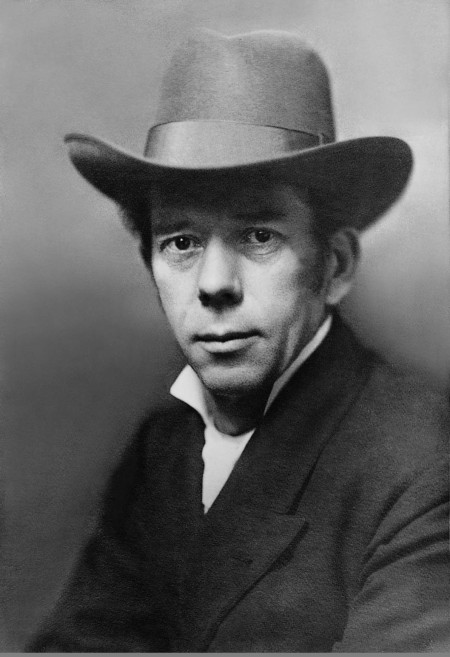
11 August 1863, Szarvas – 10 September 1922, Budapest
Árpád Szendy was one of the most significant figures of the Hungarian music pedagogy, who as an outstanding pianist and teacher, - in cooperation with Kálmán Chován - worked out the first systematic curriculum of the Academy of Music, including all years of study. Not only did he establish the norms of the academic training by that, but since his curriculum was extended for all the state music schools, as well, he provided direction for the Hungarian piano education as a whole.
Árpád Szendy continued his studies, started at his native town, at the capital from 1876 and became a student of the Nemzeti Zenede [Music Secondary School] and of the Academy of Music from 1879. He completed the piano major with the guidance of Henrik Gobbi and composition with Hans Koessler. As an honor of his talent and knowledge he won the Liszt scholarship in the 1883/1884 school year and – probably in connection with that – became a pupil of Liszt in that academic year. He had to leave out the following two academic years due to his illness and other difficulties, and he could continue his studies only from 1887 with his former teacher, Henrik Gobbi – as Liszt died in 1886. He earned his degree by the spring of 1889 and went on a study trip in the autumn of the same year. He spent one year in Weimar and Berlin to study with former Liszt-disciples: Bernhard Stavenhagen and Hans von Bülow. He was appointed as a piano teacher of the Academy of Music after his return, in January, 1891.
Szendy and two of his colleagues, appointed at the same time as him, Kálmán Chován and István Thomán were soon faced those problems which originated in the unregulated Hungarian music education. The development of a authoritative curriculum which could be generally introduced at other music schools of the country – at lower levels of music education - was indispensable to raise the standards of the piano (and music in general) education. All three of the professors of the piano department participated in the years of work each of them asserting his personality and artistic-pedagogic principles. The differences between the Szendy–Chován- and the Thomán-methods were pointed out by their contemporaries, interpreting them in certain cases as contraries or fortunate complementary of each other. F. Gy., writer of the Szendy-portrait published in the May, 1917 edition of the Zenei Szemle summarizes the essence of the two methods: ‘We may divide pedagogues generally into two groups. The first group consists of those whose teaching covers only monitoring of the student's work, who entrusts the student to his fate without making any impact on the formation of his personality, in general: aloof. The other group transmits its own world view, thinking, conception, knowledge, whole personality to his student, and intends to form him to his own image. Árpád Szendy belongs to this second group.' According to the pertinent phrasing of György Kálmán in 1928, a former student of Thomán: ‘the school of Szendy plans the playing precisely in the smallest details, the school of Thomán designs only the frame precisely, in advance, leaving more space for the filling of the frame and the inspiration of the moment.'
In fact, while István Thomán presented the World with outstanding performers first of all, Árpád Szendy with excellent pedagogues primarily. The students of Szendy were: Ernő Fodor, Emánuel Hegyi, Ilonka Kabos, Sándor Kovács, Géza Nagy, Sándor Reschovszky, Irén Senn, Ernő Unger and Mrs. Margit Varróné Picker, among others. As an acknowledgement of his pedagogical prestige Szendy was appointed to lead the artist trainer school as well, organized in 1911. His artist candidate students debuted at a successful concert at the Konzerthaus in Vienna, in 1914.
Over time, the method of Szendy was ripe for upgrading which was first tried by Ernő Dohnányi in 1918. Szendy, characteristically, missed just the pedagogical progressivity, the observance of the principle of gradualism from the part of the former Thomán-student and disagreed especially in that Dohnányi called for the usage of Urtext editions against the editors' editions. However the reform plans of Dohnányi were rejected by the directorate, Szendy was still relegated to the background. Aladár Tóth wrote about the reasons of that, too in his obituary on the occasion of the death of Szendy on September 10, 1922 modulating the image of Szendy formed in his contemporaries: ‘If it is allowed to talk about tragedy in a life so full of successes and recognitions, then we should seek for the tragedy of Szendy just in his public and relating pedagogic activities that deprived him from the truest opportunity for prevalence: the stage. [...] Piano teaching was really the brunt of Szendy's life. Still we feel that the personality of Szendy could have unfolded much more naturally on the concerts stage than in the classroom. [...] In the school of Szendy besides that students were accustomed to honest, conscientious work; we could find only the impact of the outstanding personality with all its advantages and disadvantages. We lacked the professor's approaching to the student more at him than the great results of modern teaching methods that he rigidly refused.' Despite this aloof behavior –admits Aladár Tóth finally- ‘we could always feel his strong hand and the fascination of his original, excellent personality has still not been ceased now, when we are separated from him by the grave.'
K. A.


